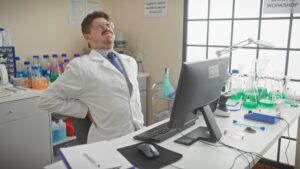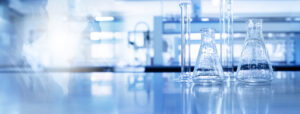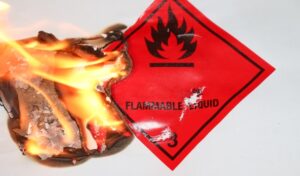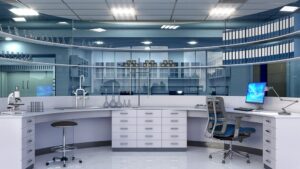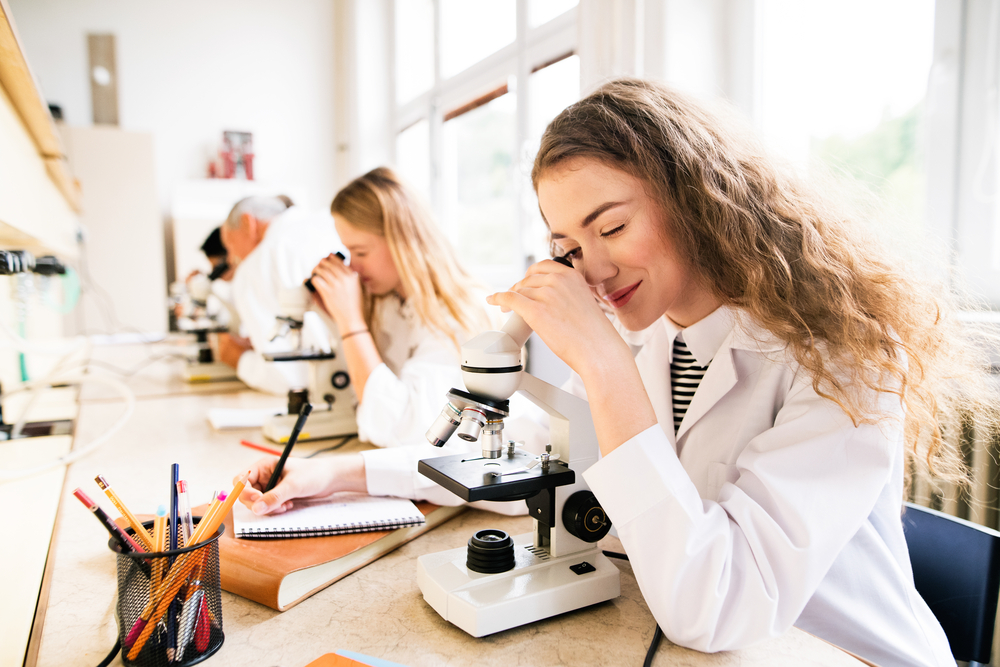
The safety and functionality of school chemistry lab furniture play a pivotal role in creating a conducive learning environment that fosters hands-on experimentation and scientific inquiry. The choice of school chemistry lab furniture should form a part of the overall lab design.
From the selection of tabletop materials to the design of workstations and storage solutions, every aspect of lab furniture contributes to the overall well-being of students and instructors.
This article delves into the key considerations and best practices in ensuring the safety and functionality of school chemistry lab furniture. By exploring the crucial elements that make up a well-equipped laboratory, educators, and administrators can contribute to a positive and secure educational experience for budding scientists.
The Role of Chemistry Labs in Schools
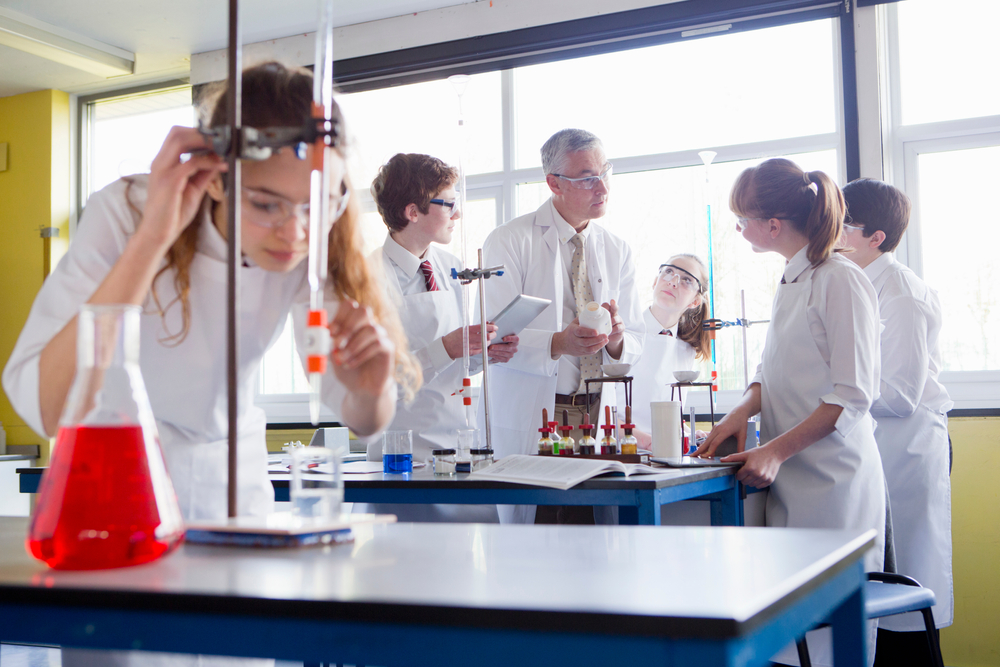
Chemistry is the scientific discipline that studies the properties, composition, structure, behavior, and changes of matter. It is often referred to as the “central science” because it connects and bridges other natural sciences, such as physics, biology, and environmental science.
Chemists explore the interactions between atoms and molecules to understand the fundamental principles governing the substances that make up our world. The field encompasses a wide range of topics, including chemical reactions, the periodic table, molecular structures, and the properties of different elements and compounds.
Overall, chemistry plays a crucial role in our understanding of the material world and is essential for advancements in various scientific and industrial fields.
A school chemistry laboratory serves several important purposes, contributing significantly to the overall learning experience of students studying chemistry. A laboratory gives us a perfect chance to build upon the basics taught in the science classroom.
In summary, the school chemistry laboratory serves as a dynamic learning environment where students can explore, experiment, and develop a comprehensive understanding of chemistry. It plays a pivotal role in shaping students into scientifically literate individuals with practical skills and a passion for scientific inquiry.
Essential School Chemistry Lab Furniture to Combine Safety and Functionality
Designing a well-equipped and safe lab requires careful consideration of essential school chemistry lab furniture to facilitate experiments and ensure the well-being of students and teachers. Here are key pieces of furniture that are typically found in a school chemistry lab:
Lab Benches/Workstations
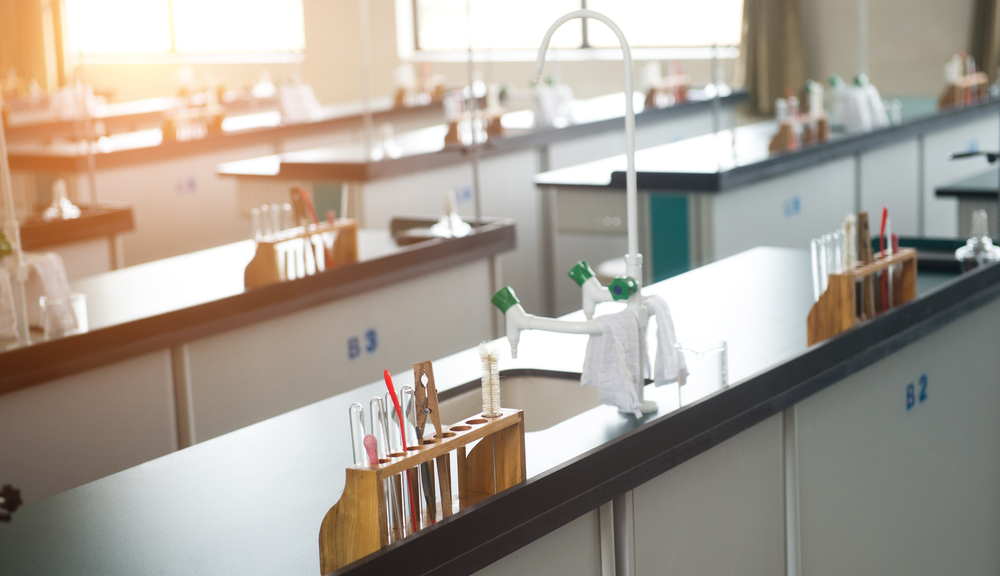
Lab benches or workstations form the crux of school chemistry lab furniture. The choice between freestanding or island workstations and wall-facing lab benches in a chemistry lab depends on various factors, and both setups have their advantages and considerations, particularly concerning safety and functionality. Here’s a comparison:
1. Island Workstations
Safety Considerations
- 360-Degree Access: Island workstations offer all-around access, allowing instructors to monitor students easily. This can enhance overall safety supervision.
- Spacious Layout: Islands typically provide more working space, reducing the risk of clutter and promoting organized work areas.
- Emergency Evacuation: Evacuation paths are generally more open and accessible, facilitating a quicker response to emergencies.
Functionality
- Flexibility: Island workstations offer more flexibility in terms of rearrangement, allowing for different configurations to accommodate various experiments.
- Collaboration: Students working at island workstations may find it easier to collaborate, fostering teamwork during group experiments.
- Equipment Placement: The placement of equipment is often more versatile, allowing for better optimization of space and resources.
2. Wall-Facing Lab Benches
Safety Considerations
- Limited Access Points: Wall-facing benches may limit access points, which can help control and monitor the entry and exit of students.
- Space Optimization: In smaller labs, wall-facing benches may be more space-efficient, preventing overcrowding and promoting better organization.
- Clear Line of Sight: Instructors may have a clear line of sight for all students working along the wall, enabling better monitoring of activities.
Functionality
- Fixed Configuration: Wall-facing benches are typically fixed in place, which may limit flexibility when setting up for different types of experiments.
- Equipment Placement Challenges: Limited flexibility may pose challenges in arranging equipment optimally, potentially affecting workflow efficiency.
- Individual Workstations: Each wall-facing bench may function as an individual workstation, which can be beneficial for certain types of experiments that require focused attention.
In a nutshell, both island workstations and wall-facing chemistry or science lab tables can be safe and functional school chemistry lab furniture, depending on the specific needs and constraints of the lab space. It’s crucial to carefully assess the lab requirements, experiment types, and safety considerations before deciding.
Additionally, consulting lab safety experts and considering local safety regulations is essential to ensure a safe and functional learning environment.
Safe and Functional Workbench Tops for School Chemistry Labs
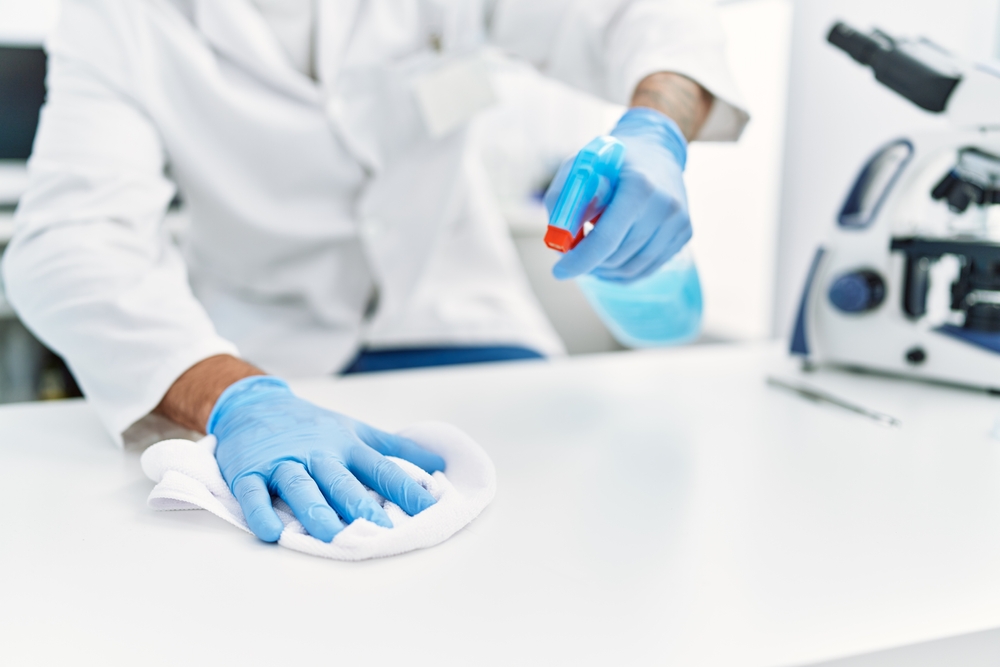
Several materials are commonly used for the tabletops of chemistry lab workbenches, each with its own set of properties and advantages. The choice of tabletop material for school chemistry lab furniture depends on factors such as chemical resistance, durability, ease of maintenance, and budget considerations. Here are some common options:
1. Epoxy Resin
Epoxy resin is a synthetic polymer that undergoes a chemical reaction when mixed with a curing agent, resulting in the formation of a durable, and frequently transparent material. It is widely used for numerous applications, including as a protective coating.
Properties:
- Highly chemical-resistant
- Durable and able to withstand impact
- Non-porous and easy to clean
- Resistant to heat and moisture
Applications:
- Ideal for chemistry labs where corrosive chemicals are frequently used
- Suitable for laboratories with high humidity or moisture levels
2. Phenolic Resin
Thermoset polymers are created when phenol and formaldehyde are combined to create Phenolic (PF), which cure in a different form than their uncured state and can’t be re-melted.
Properties:
- Resistant to chemicals and moisture
- Non-conductive and flame and heat-resistant
- Durable and impact-resistant
- Moderately priced compared to some alternatives
Applications:
- Suitable for general chemistry labs where resistance to chemicals and durability are essential
3. Chemical-Resistant Laminate
Chemical-resistant laminate is a type of laminate material that is specifically designed to withstand exposure to various chemicals without exhibiting any signs of degradation or damage.
Properties:
- Resistant to many chemicals
- Durable and cost-effective
- Available in various colors and finishes
Applications:
- Commonly used in educational labs where a balance between chemical resistance and cost is required
4. Stainless Steel
Stainless steel has a fundamental property of strength, which makes it a highly sought-after metal for school chemistry lab countertops and furniture.
Properties:
- Highly resistant to corrosion and chemicals
- Durable and easy to clean
- Resistant to heat
Applications:
- Suitable for labs where frequent exposure to corrosive chemicals is expected
- Often used in pharmaceutical and biomedical labs
5. High-Pressure Laminate (HPL)
HPL is made by layering multiple sheets of kraft paper impregnated with phenolic resin and overlaying them with a decorative paper containing melamine resin. The stack is then subjected to high heat and pressure to create a solid, dense sheet.
Properties:
- Resistant to chemicals, heat, and moisture
- Durable and cost-effective
- Available in various colors and patterns
Applications:
- Commonly used in educational labs and research environments
6. Polypropylene
Polypropylene is a rigid and crystalline thermostatic material that’s useful for applications that require corrosion resistance.
Properties:
- Resistant to a wide range of chemicals
- Non-reactive and easy to clean
- Suitable for wet bench applications
- Polypropylene benchtops have high-volume biochemistry labs and proteomic research
Applications:
- Commonly used in labs where a high level of chemical resistance is crucial, especially in wet lab environments
7. Ceramic Work Surfaces
Ceramic work surfaces are made from a blend of clay, quartz, feldspar, and other natural products.
Properties:
- Resistant to chemicals, heat, and abrasion
- Durable and inert
Applications:
- Ideal for labs with demanding requirements for chemical and heat resistance
8. Granite or Solid Surface Materials
Granite is a type of igneous rock; it is tough and durable and is, therefore, an ideal material for worktops.
Properties:
- Resistant to chemicals and heat
- Durable and aesthetically pleasing
Applications:
- Suitable for labs where a combination of chemical resistance and a visually appealing surface is desired
When selecting the tabletop material for chemistry lab workbenches, it’s crucial to consider the specific needs of the lab, the types of chemicals used, and the intended applications. Additionally, adherence to safety regulations and standards is essential in ensuring a safe and functional laboratory environment.
Fume Hoods for School Chemistry Labs
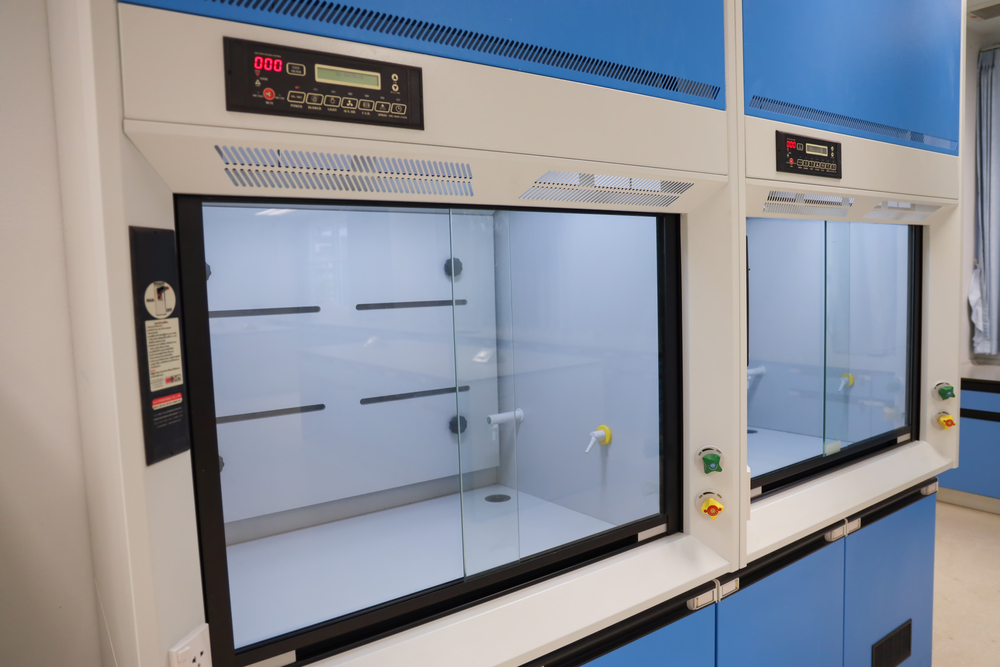
Laboratory fume hoods are considered essential equipment for school chemistry lab furniture. Fume hoods are designed to provide a safe and controlled environment for conducting chemical experiments. They help in containing and removing harmful fumes, vapors, and gases that may be released during various chemical processes and laboratory work.
The most common type of fume hood for school chemistry lab furniture are bench top units, installed on top of lower base units, most typical base cabinets.
Examples of safe and functional fume hoods include:
- Student Viewing Hoods: Specialized equipment designed for educational settings, particularly in laboratories and classrooms where students engage in experiments and demonstrations involving hazardous materials. These fume hoods often have transparent front panels to provide a safe and controlled environment for students to observe chemical reactions, demonstrations, or experiments involving potentially harmful or flammable substances.
- Pass-Thru (Double-Sided Hoods): Pass-thru fume hoods are used for experiment preparation and set up in high school laboratories and prep rooms. They can also be used as a stand-alone demonstration-style hood or as a pass-through between rooms.
- Polypropylene Plastic Fume Hoods: Polypropylene fume hoods are laboratory safety hoods that are resistant to chemicals and protect workers from toxic materials. They are designed for applications that use acids, organic solvents, and other corrosive materials.
- ADA Accessible Fume Hoods: Designed to meet the accessibility requirements outlined in the Americans with Disabilities Act (ADA). These fume hoods are specifically adapted to provide access for individuals with disabilities, ensuring that they can use the equipment comfortably and safely.
These fume hoods play a crucial role in creating a controlled, safe, and functional workspace for school chemistry laboratory activities involving hazardous materials, ensuring that students and teachers can work with confidence while minimizing the risk of exposure to harmful substances.
Storage Cabinets
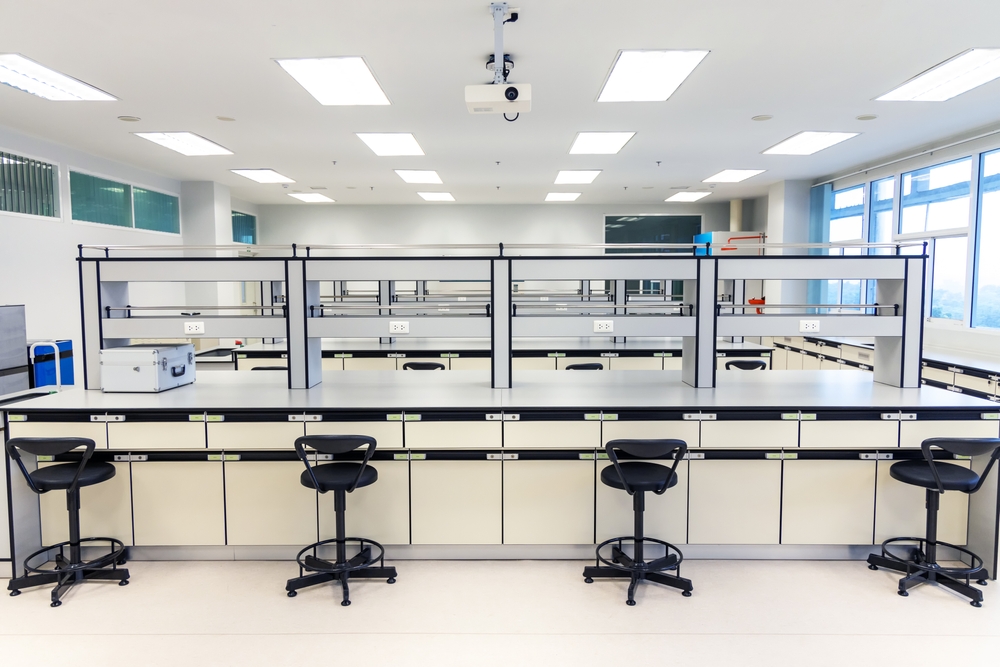
Storage cabinets used in school chemistry labs are specially designed to safely store chemicals, reagents, and laboratory equipment. Casework plays a crucial role in maintaining a well-organized and secure environment.
Cabinets come in various sizes and configurations to meet the specific storage needs of the laboratory.
While storage units like wall-mounted cabinets and stand-alone cabinets serve specific storage functions, under-bench cabinets, and reagent racks are common choices for safety and functionality in school chemistry labs.
Base Cabinets are installed underneath the worktop for safe storage of reagents, glassware, and equipment, with secure locks to prevent unauthorized access.
The base cabinets should be stocked with the necessary chemicals, microscopes, and other lab equipment as required for each lesson. Functional choices include chemical-resistant steel cabinets with glass doors.
A reagent rack is a specialized piece of school chemistry lab furniture designed for the organized storage of ready-to-use chemical reagents, solutions, and other laboratory substances.
The primary purpose of a reagent rack is to provide a safe and convenient place to store chemicals, making them easily accessible to students and instructors during experiments.
Storage cabinets in school chemistry labs are carefully designed to provide a secure and organized storage solution for chemicals and equipment. Their construction, ventilation, labeling, and safety features contribute to creating a safe and efficient laboratory environment conducive to effective teaching and learning.
Balance Tables
In a school chemistry lab, this table is used for accurately measuring the mass of chemicals or substances in experiments. The balance table is designed to minimize vibrations and disturbances that could affect the precision of measurements.
It provides a stable platform. ensuring that it functions accurately and reliably.
Lab Seating
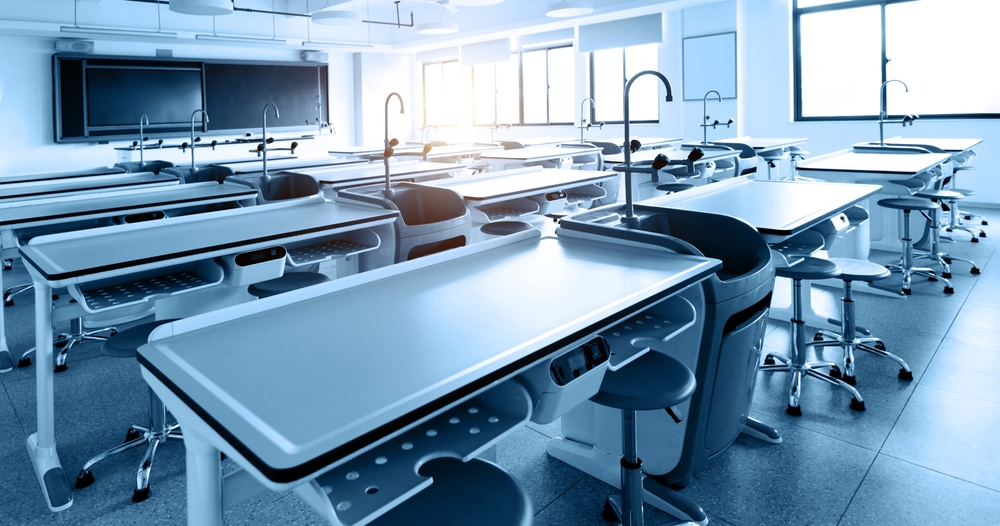
Stools with adjustable heights that can be positioned under lab workbenches are frequently required in school chemistry labs. However, it is worth noting that other chairs may also be required.
For example, if the laboratory setting and layout comprise a section for experiments and another for classroom instruction, with seats positioned towards the front.
Safety Showers and Eyewash Stations
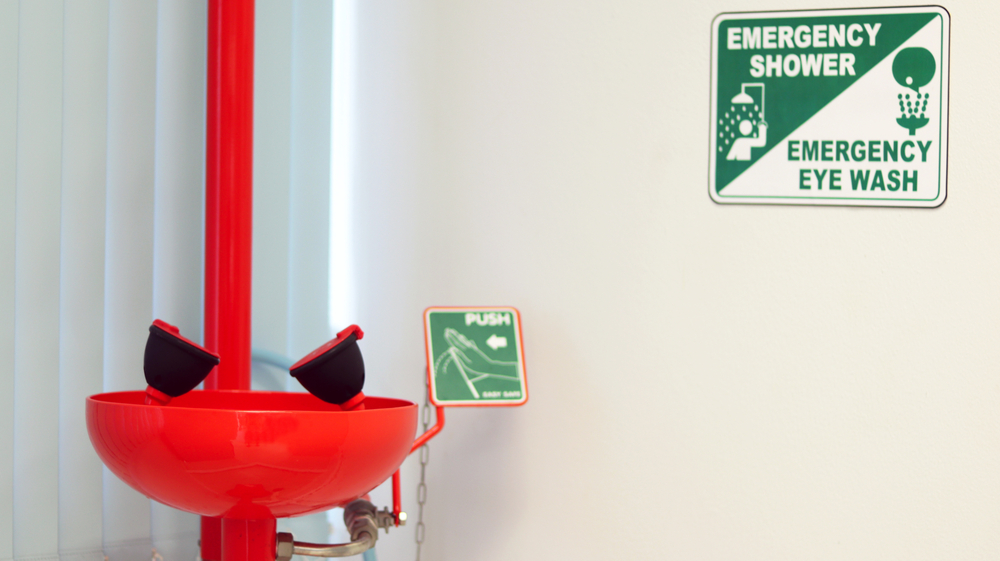
These are essential emergency equipment for quick response to chemical spills or accidents, promoting safety in school chemistry labs.
To comply with regulations and standards prescribed by the National Science Teachers Association (NSTA), OSHA, and ANSI, both safety showers and eyewash stations must be able to provide the recommended flow for at least 15 minutes.
This usually translates into having the equipment plumbed in with hard connections to the water supply.
Waste Disposal Bins
Proper waste management and disposal procedures for sorting and handling hazardous waste will ensure a safe school and protect human health and the environment.
According to the Hazardous Waste Management for School Laboratories and Classrooms, school science and chemistry laboratories should have waste disposal stations for hazardous waste that comply with the applicable requirements.
The waste containers must be labeled with appropriate pictograms and stored in cabinets according to the hazards of the content.
Additional Options for Enhanced Safety and Functionality of School Chemistry Labs
-
Sinks and Faucets
Adequate sinks with running water for general cleanup and for students to wash their hands and equipment.
-
Lab Carts/Trolleys
Mobile carts for transporting equipment and materials around the lab, promoting flexibility.
-
Chemical Resistant Flooring
Flooring that is resistant to chemical spills for easy cleanup and to prevent damage.
-
Computer Desks
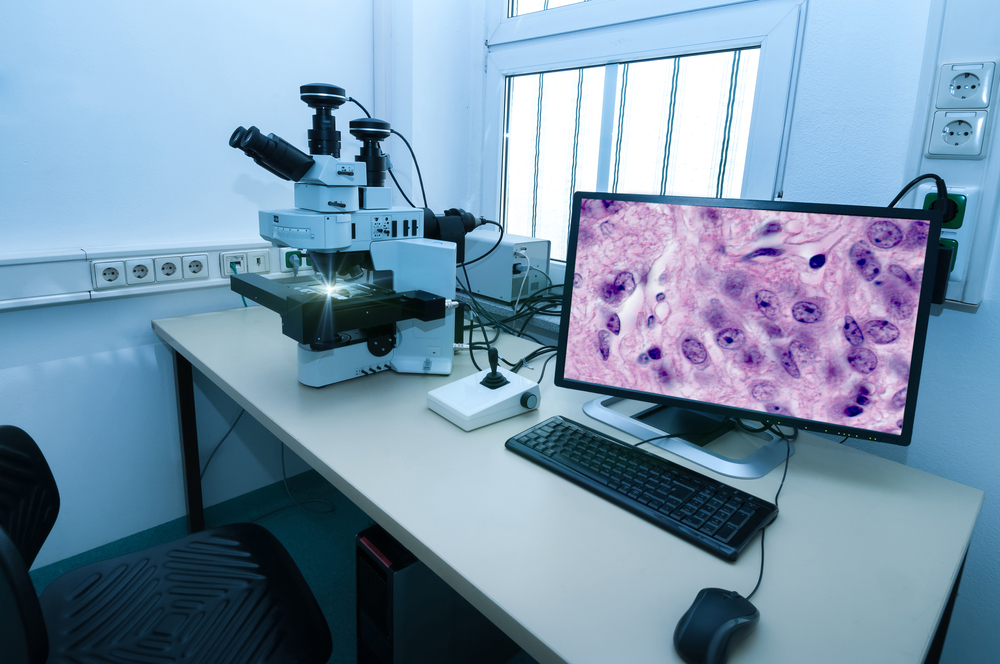
Desks equipped with computers for data analysis, research, and other computer-based tasks.
-
Power Outlets
Sufficient power outlets for connecting electrical equipment, computers, and other devices.
-
Teacher/Demo Desk and Whiteboard
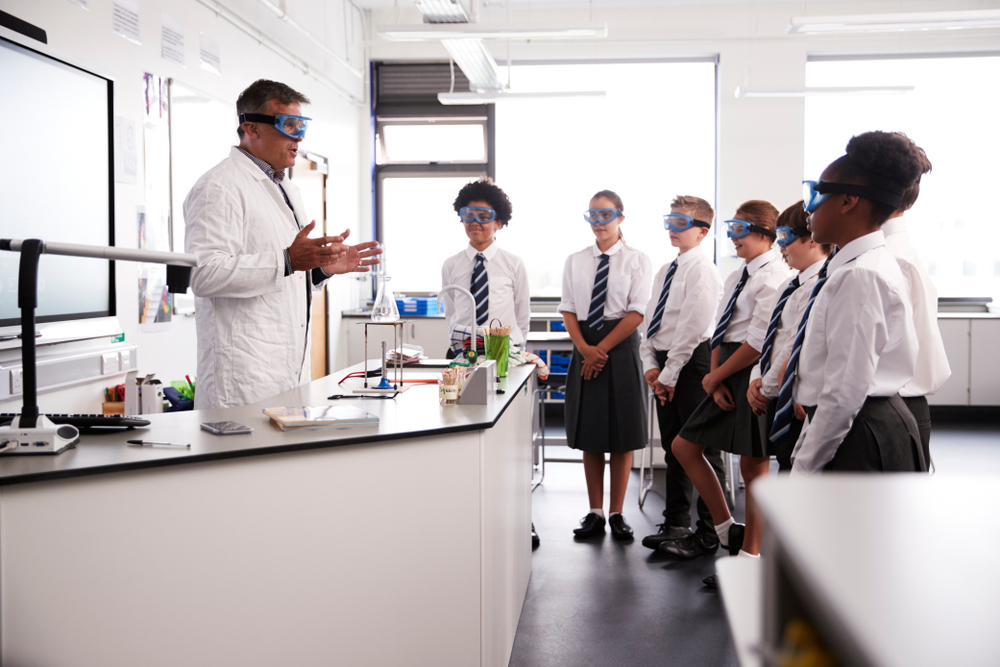
A purpose-built bespoke desk or platform may be needed for teachers to address the class or demonstrate experiments.
-
Fire Extinguishers
Strategically placed fire extinguishers for immediate response to potential fire hazards.
-
First Aid Kit
A well-equipped first aid kit for addressing minor injuries or accidents.
-
Emergency Exits
Clearly marked and easily accessible emergency exits for swift evacuation during emergencies.
When planning a school chemistry lab, it’s crucial to adhere to safety regulations, ensure proper ventilation, and provide adequate space for each student to work comfortably. Regular maintenance and safety training are also essential components of a well-functioning and safe chemistry lab.
Conclusion
In the realm of science education, the importance of safety and functionality in school chemistry laboratory furniture cannot be overstated. Seeking the guidance of an accredited lab furniture provider can provide the required results.
A well-designed and properly equipped laboratory enhances the learning experience and instills a culture of safety and responsibility among students.
By prioritizing high-quality chemical-resistant materials, effective ventilation systems, and ergonomic workspaces, educators contribute to an environment where experimentation is not only enlightening but also safeguarded
As schools continue to advance their science programs, a commitment to ensuring the safety and functionality of chemistry lab furniture remains fundamental, fostering a generation of inquisitive minds ready to explore the wonders of the scientific world.

